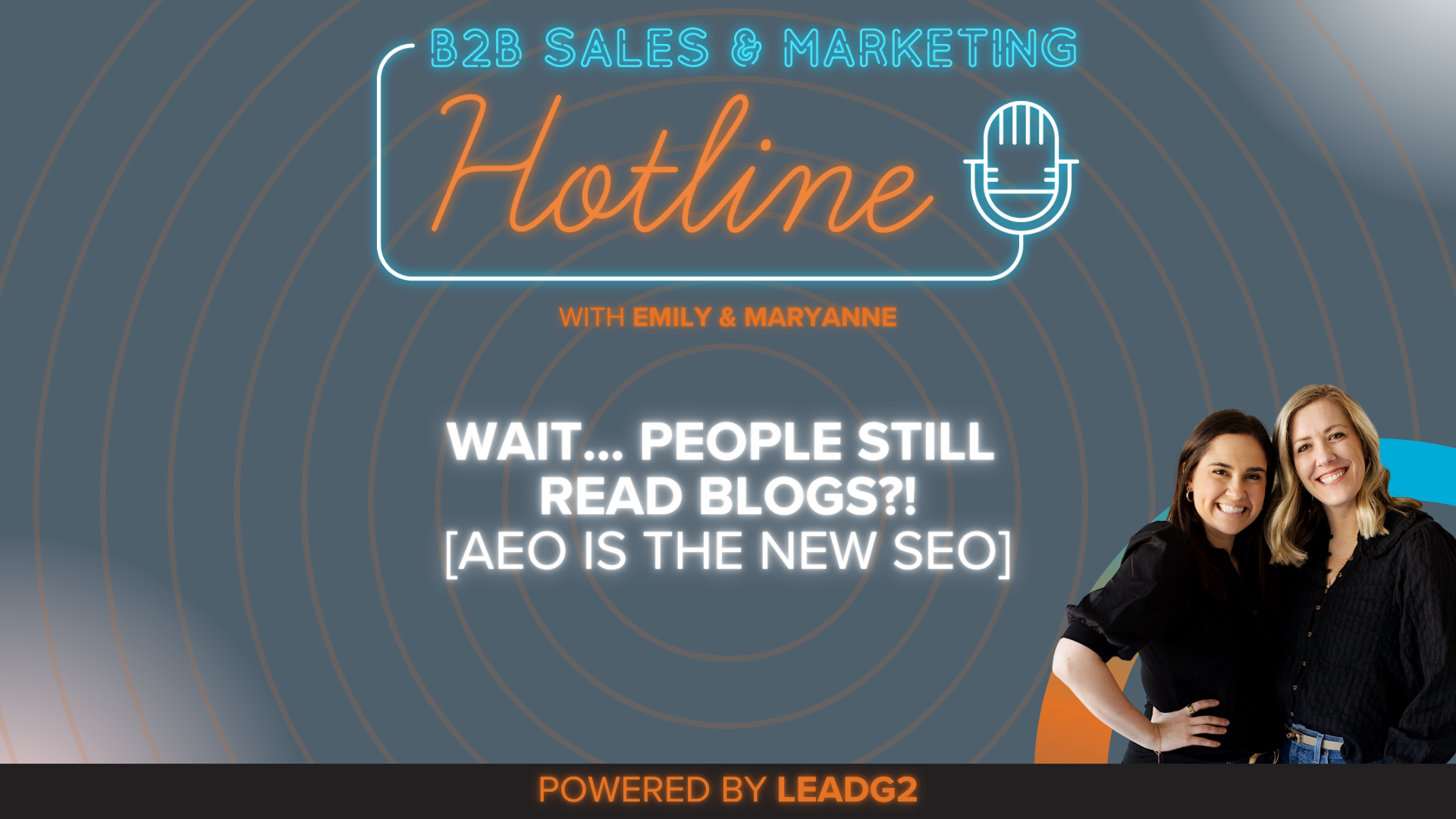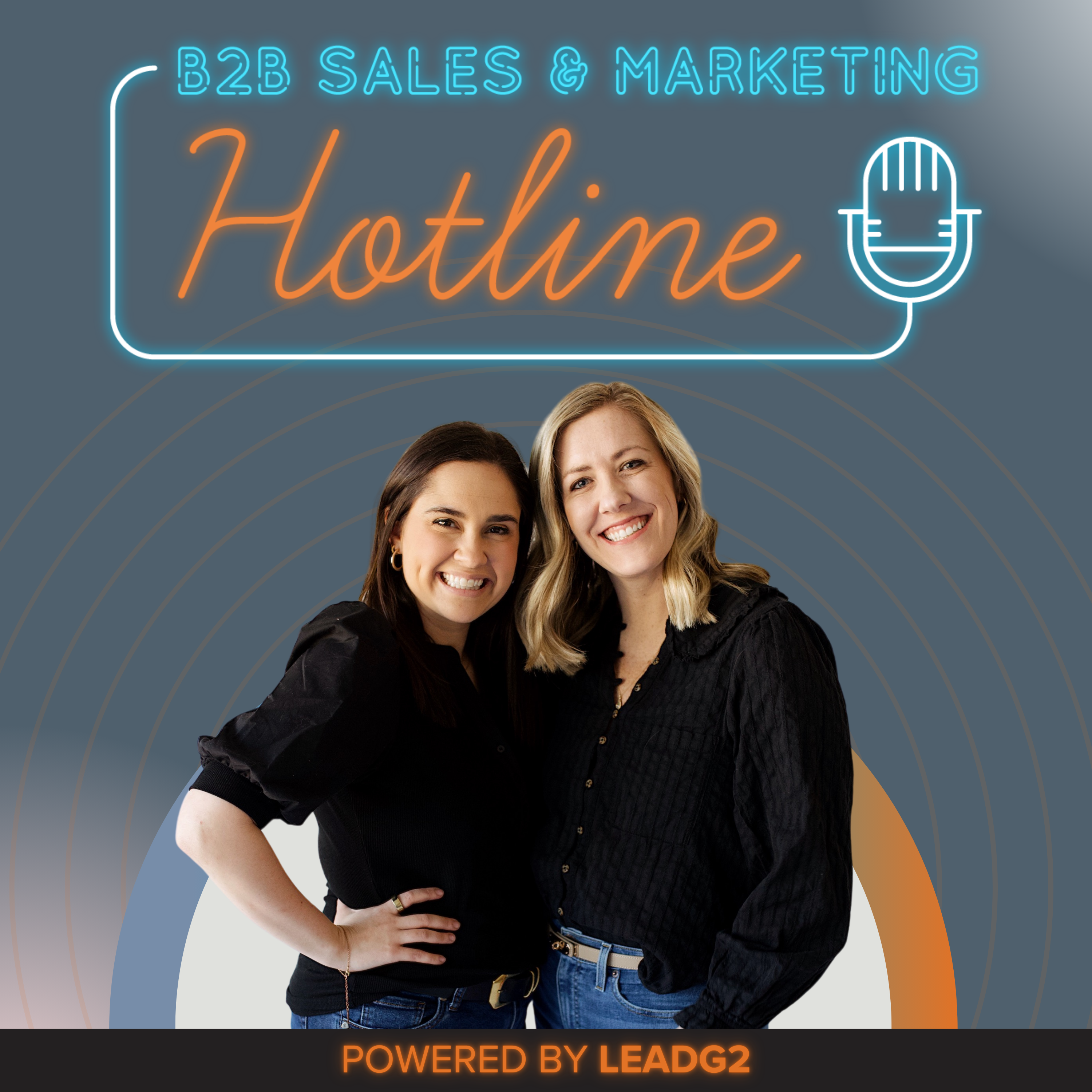How to Take Vacation and Leave Your Computer at Home (For Marketers)
Everyone needs a break. But, surprisingly, less than half of US workers use all of their vacation days every year! No one should be leaving any of...


In this episode, Emily and Maryanne unpack how blogging for B2B has evolved in the age of AI.
From writing for Google to writing for ChatGPT, they explore why traditional SEO tactics no longer cut it and what you should be doing instead to make sure large language models [LLMs] like ChatGPT actually understand and recommend your business.
Whether you're still writing blogs like it’s 2019 or wondering if blogs are even worth the effort anymore, this episode offers the clarity you need as well as tactical next steps to align your content with how modern buyers (and bots) search.
You’re not blogging for SEO anymore. You're blogging for AI. Optimizing for search engines is out. Optimizing for AI search (AEO) is in.
LLMs like ChatGPT and Gemini need your blog content to accurately answer user questions about your company.
Content must be clear, structured, and explicit. Write in bullet points, summaries, and Q&A style for easy AI comprehension.
Old blog content isn’t dead, it just needs re-optimizing. Add summaries, update titles, and link content directly to your services.
Blogging is still a powerful sales enablement tool even if people aren’t reading them the same way they used to.
In a world driven by AI-generated answers, the way we approach blogging as B2B marketers is evolving rapidly.
So, do you people even still read blogs? Spoiler alert: they do. But that's not the point anymore.
Three years ago, blogging was about educating humans and climbing the SEO rankings. Today? It’s about teaching large language models (LLMs) like ChatGPT about your business so they can educate your prospects on your behalf.
When a buyer types a query into ChatGPT, it responds with a confident answer, often based on the blog content and structured data available on your website.
If that information isn’t clear or accessible, you’re invisible.
“You're blogging to give the LLM the answer so that when someone goes on ChatGPT and says, ‘I'm a business. I'm looking for X, Y, Z’... it gives you as the answer.”
Emily shared a personal story about choosing a high-yield savings account... not from Google, but from ChatGPT. It recommended a company she’d never heard of, Raisin, and because the LLM had all the info she needed (rates, fees, company details), she trusted it and opened an account.
Why did ChatGPT recommend Raisin? Because Raisin fed the machine. Their content was clear, structured, and AI-readable.
Start each blog with a summary box or bullet list of key facts and insights (no fluff). This helps AI grab accurate info fast.
Structure parts of your blog like an FAQ. Give the AI both the question and the answer to reduce misinterpretation.
In the past, being subtle and educational was best practice.
Now, LLMs need you to connect the dots: “Here’s the pain point. Here’s how our service solves it.”
Google-based SEO optimization through keyword density is no longer effective. LLMs are looking for clarity, relevance, and context.
Just because blogging has evolved doesn’t mean your existing content is worthless. In fact, it’s often a goldmine.
Re-optimize past posts with summaries and updated language
Rewrite titles to be modern, helpful, and LLM-friendly
Add explicit connections to your product or service
Use old blogs for sales enablement: Share in follow-ups, nurture sequences, and social posts
Need content ideas? Just ask ChatGPT questions like:
“What are people searching for related to [your service]?”
“What are the pros and cons of working with [your company]?”
If it gives you inaccurate info, that’s your cue to publish a blog post to correct it. You’re training the model—one blog at a time.
SEO (Search Engine Optimization) targets traditional search engines like Google using keywords and metadata.
AEO (AI Engine Optimization) focuses on structuring content so that large language models (LLMs) like ChatGPT can understand and surface your business in response to user queries.
AEO is about clarity, explicitness, and topic relevance (not keyword density).
Yes! Old blog content can:
Be re-optimized with clear takeaways and modern titles
Be repurposed for sales outreach and lead nurturing
Help teach LLMs accurate info about your services
Don’t delete. Update.
Use tools like HubSpot’s AEO Grader to assess and improve your content’s AI readiness. Or, ask ChatGPT questions about your business to see what it “knows." Then use gaps or errors as content prompts.

Everyone needs a break. But, surprisingly, less than half of US workers use all of their vacation days every year! No one should be leaving any of...